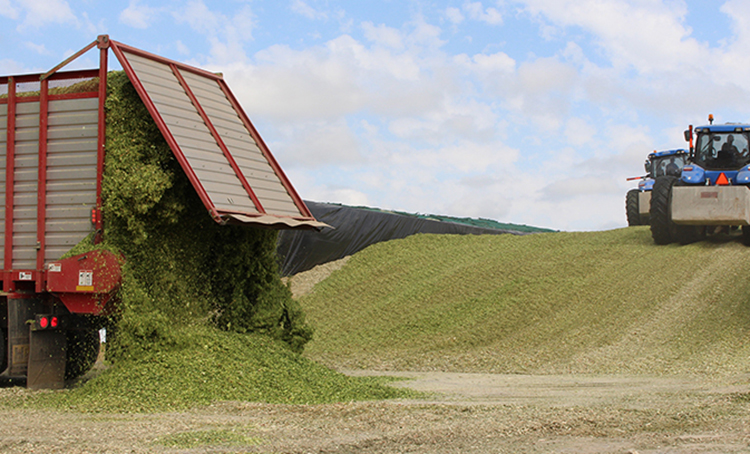
As purchased feed costs rise, farms must get as much nutritional value as possible from their homegrown forages. In a couple of short months, choppers will be hitting the corn fields. Now is the time to plan with your custom harvester and farm team, set your harvest goals, and make sure your equipment and facilities are ready. Getting everyone on the same page now ensures the job is done safely, correctly, efficiently, and cost-effectively.
These six steps can help you put up high-quality feed while limiting your potential for shrink and spoilage.
1. Cut at the right moisture. The ideal moisture content for corn silage is 65% to 68% (32% to 35% dry matter [DM]).
2. Keep tabs on the chop length. The ideal chop length is largely dependent on moisture and is critical to adequate particle length in the TMR. A good rule of thumb is a theoretical length of cut (TLOC) between 16 and 20 mm (5/8 to 3/4 inch). Evaluate chop length several times during harvest and adjust as needed.
3. Process well. Good corn kernel processing means breaking a kernel into at least four separate pieces. Drier corn silages will require a higher corn silage processing score (CSPS).
4. Use a proven inoculant. A high-quality and proven inoculant is an essential component of a solid forage program. Vita Plus Crop-N-Rich® forage inoculant with MTD/1 technology promotes a more efficient fermentation and improves DM recovery. Research has also shown improved DM intakes and milk production with Crop-N-Rich-treated forages. If spoilage and heating are concerns, consider using an inoculant containing L. buchneri 40788, such as Crop-N-Rich Buchneri.
5. Pack well and cover. Packing densities less than 15 pounds per cubic foot are subject to a DM loss of greater than 15%. Know your packing tractor weight and fill rate to help you achieve adequate density. Quickly cover bunkers or piles with an oxygen barrier plastic, such as Silostop®, to help protect all the work and money you invested in the crop.
6. Allow for adequate storage time. Ideally, corn silage should sit in the silo untouched for at least three months before feeding to get the most milk per ton. This makes starch more available to rumen micro-organisms.
Finally, remember to work safely throughout all of harvest. We wish you all success as you prepare for this year's harvest!


